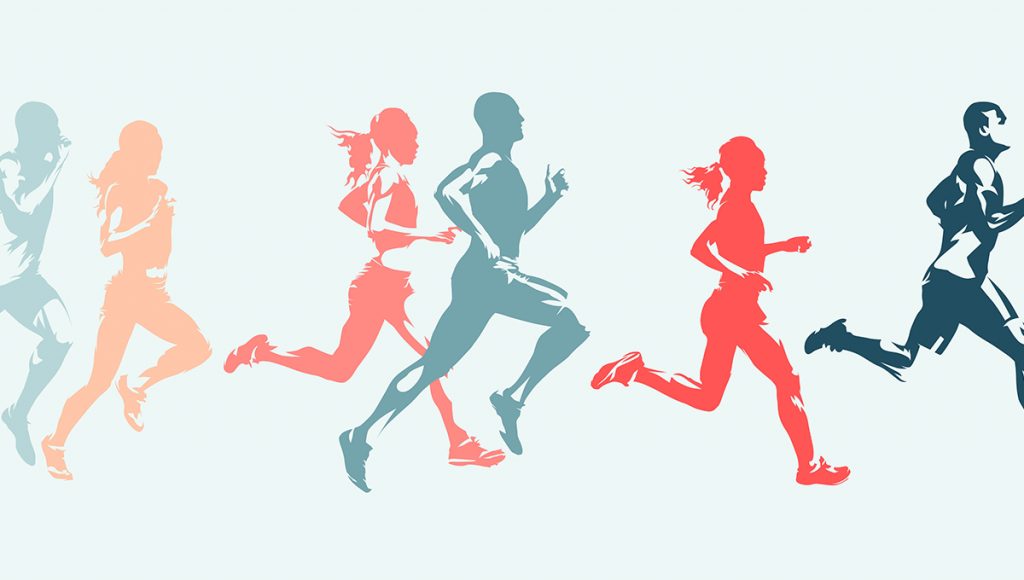Running a mile as fast as you can may not be an activity you’d associate with work performance. But it turns out the components of science that keep people cool under pressure, and improve performance under stressful conditions in the long term, play out on the track and in the boardroom. And when done well, it results in the greatest consistent performance of all time.
Just ask Nick Willis–an athlete whose ability to perform under pressure again and again and again has arguably made him the greatest of all time in mid-distance running. Though he’s competed in five Olympic games, medaling twice, the real story here is his ability to run a mile in under four minutes for a world record – 19 years in a row. This week, at the 114th Millrose Games in New York City, he’ll go for No. 20. We spoke to Willis about his career, and how emotional regulation and visualization contribute to his success, and–at times–his failure. Below are edited excerpts.
Q: Most people probably assume running a mile doesn’t require much thought. But it’s not just you going out there and running as fast as you can, is it? What else is happening?
There are a few different elements unique to our sport that create quite an intense moment. First, they huddle all of the competitors in the same, little locker room right before the race, so you have 20 or 30 minutes sitting within a 20-by-20 size room face-to-face with your foe. There’s this definite silent gamesmanship that you have to navigate –are you going to go up and wish them all luck, or are you going to stare them down or look down at the floor and try to ignore that that process is going on?
Q: So you’re primed for battle, but the fight doesn’t start right away, right? So you have to keep cool for a little longer?
The 1500 meters, my event, starts at an obscure part of the track, so you have to walk 200 meters all the way around to the track with all your competitors. You’ve got to be very cordial with each other at that moment, and then, when you’re on the starting line, that’s when you know there’s only three spots that are preferential positions: to be second, third or fourth and 15 people want to be in those three spots.
Once the gun goes off, we’re in a straight line and you’re pushing and shoving for that first 30 or 40 meters to get to those spots. So basically for 45 minutes, from the small room to right up until the gun goes off, you’re in this mental fight. Then you’re dealing with the actual race. You can’t sprint the whole way– it looks like a sprint, but you have to conserve energy. So you’re under this state of emotional control where you’re trying to go as fast as you can, but as relaxed as possible. You’re trying to completely subdue all of those impulses to sort of go wild and really dig down deep and reach for your muscles, but to relax and calm yourself through that intense moment, and then stay in that state of relaxation for three and a half minutes. You only really get to unleash and dig down in the final 30 seconds of the race. If you do that any earlier you won’t reach the finish line, your body will completely shut down.
Q: Is it all physical at that point or are you mentally processing the battle as well?
You know exactly the splits you need to be hitting every 200 meters and I’ve got clocks stationed all the way around the track. Ideally, you want to be running at an even pace, but you also want to be second, third or fourth all of the way. So how do you get into those positions, while not screwing up your pace judgment?
If you want to move up, you have to suddenly change gears like a car, so to speak. You have to go from third to fourth gear and then drop back down to third again, or sometimes you have to go into fifth gear to be able to get into position but you’re going to use up a lot of fuel. And you’re not going to have that fuel at the end of the race, so you’re calculating to make sure it’s even possible. If it’s a really technical race where it’s slow for the first half, you have to recalibrate those calculations for the second half of the race. Then it turns into an 800-meter calculation, rather than the mile calculation.
Q: Obviously emotional regulation is a requirement to keep cool. How do you mentally prepare to be able to shift and anticipate all possible outcomes?
I’ve always been a huge fan of the sport. Before I became an elite athlete I watched every single race that was ever available to me. Track and field in New Zealand [where I grew up] wasn’t a primary sport, so when I got my hands on a VCR tape of a World Championship or an Olympic Game, I would just hold on like it was gold and I’d re- and re- and re-watch all of those races, time and time again. I’d probably seen every Olympic final 1,000 times before I even became an elite athlete. Once I became one and was in these situations, like the Olympics or World Championships for the first time, I knew all of those different scenarios, because I had imagined myself being in those races.
I was always looking at the race through the lens of a certain athlete, but I never imagined being the winner. I imagined being the underdog that surprised a lot of people and came through at the end and succeeded and picked up a minor medal or finished top five sort of thing. And that’s exactly what the majority of my career has ended up being.
Q: Has being a 38-year old athlete changed the way you use visualization?
Where I’ve struggled later in my career is when I haven’t had the same reserves of youth and fitness. I’ve never watched the videos through the lens of the athlete that’s struggling at the end of the race and is really having to grind out and hold on. So when I’m in those situations, I don’t have the memory reserves to draw upon to get through those moments. Then I start panicking and a bad race turns into a really bad race, because I don’t have ways to emotionally cope with that new experience.
So in more recent times when I’ve started visualizing, the words I’ve been speaking to myself on the starting line are very different now, because I say, “it’s gonna hurt but that’s okay, it’s gonna hurt but that’s okay.”






